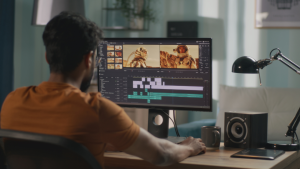Creating engaging content for YouTube videos is a labor of love for many creators. However, encountering a copyright claim can be frustrating and intimidating. Copyright claims often arise when copyrighted material, such as music, video clips, or images, appears in your content. While it may seem daunting, resolving these claims is often straightforward if you understand the process. This article provides a step-by-step guide to removing copyright claims from YouTube videos to help you protect your channel and content.
What is a Copyright Claim?
A copyright claim occurs when YouTube’s Content ID system detects copyrighted material in your videos. It’s not the same as a copyright strike, which is more severe and can lead to penalties on your account. A claim often means that the copyright owner has chosen to monetize your video, mute the audio, or restrict it in certain regions.
Step 1: Understand the Type of Claim
Before taking action, identify the specific type of copyright claim affecting your YouTube videos. Navigate to the YouTube Studio and click on the Content tab. Videos with claims will display a “Copyright Claim” notice. Click on “See Details” to review the specifics, such as:
- The portion of the video affected
- The copyright owner
- The action taken (e.g., monetization or restrictions)
Step 2: Check Your Usage Rights
Sometimes, copyright claims arise due to misunderstanding. If you believe you have the right to use the material, verify your permissions. Examples include:
- Fair Use: If your use is transformative, educational, or critical, it may qualify as fair use under copyright law.
- Licensed Material: Ensure that the license agreement covers your specific use.
- Royalty-Free Content: Double-check whether the content truly falls under royalty-free terms.
Step 3: Remove or Replace the Claimed Content
YouTube provides tools to remove or replace copyrighted material without taking down your video:
- Trim the Segment: Use YouTube’s editor to cut out the part of the video containing copyrighted material.
- Replace Music: Swap the claimed audio with royalty-free tracks from YouTube’s Audio Library.
- Mute the Audio: Mute the claimed segment if removing it entirely is not an option.
These actions are accessible via the See Details page under the copyright claim notice.
Step 4: Dispute the Claim
If you believe the claim is incorrect or unjustified, you can dispute it through YouTube Studio. Here’s how:
- Go to the Copyright Details section for the affected video.
- Click Dispute and choose the reason for your dispute, such as fair use or licensed content.
- Provide supporting evidence, such as a license agreement or an explanation of fair use.
Step 5: Wait for Resolution
Once you submit a dispute, the copyright owner has 30 days to respond. They may:
- Release the claim: Your video will no longer face restrictions.
- Uphold the claim: You’ll need to take further action, such as filing a counter-notification.
Step 6: Prevent Future Copyright Claims
Taking proactive steps can help you avoid copyright claims on your YouTube videos:
- Use Royalty-Free Libraries: Incorporate audio, images, and video clips from trusted royalty-free sources.
- Create Original Content: Develop unique visuals, audio, and ideas to eliminate the risk of claims.
- Credit the Copyright Owner: While it doesn’t always prevent claims, proper attribution can demonstrate respect for intellectual property.
What Happens if the Claim Escalates?
In rare cases, a copyright claim might escalate into a strike if the copyright owner believes you are infringing their rights maliciously. Receiving three strikes within 90 days can result in account suspension. If a strike occurs:
- Review the Strike Notice: Understand why the strike was issued.
- Submit a Counter-Notification: If the strike is unjust, file a counter-notification with evidence.
- Reach Out to the Copyright Owner: Contact them directly to resolve the issue amicably.
Common Myths About Copyright Claims
- “Only Popular Channels Get Claims”: Content ID scans all YouTube videos, regardless of channel size.
- “Fair Use Means I’m Safe”: Fair use is subject to interpretation and doesn’t guarantee immunity.
- “Giving Credit Avoids Claims”: While attribution is good practice, it doesn’t override copyright laws.
Tools and Resources to Protect Your Content
YouTube offers several features to help you manage your videos effectively:
- YouTube Audio Library: A vast collection of royalty-free music and sound effects.
- Copyright Match Tool: Helps identify when others upload your content without permission.
- YouTube Studio Editor: Provides built-in tools to modify or replace claimed content.
Navigating copyright claims on YouTube videos may seem complex, but understanding the process can save you from unnecessary stress. Whether it’s removing the claimed content, disputing a claim, or preventing future issues, you have multiple options to safeguard your channel.
Your success as a YouTube creator hinges on producing high-quality, original content while respecting copyright laws. By following these steps, you can handle claims confidently and keep your channel thriving.
For more tips and strategies to grow your YouTube channel, visit Social Glam Up. Protect your content, stay compliant, and keep creating!







